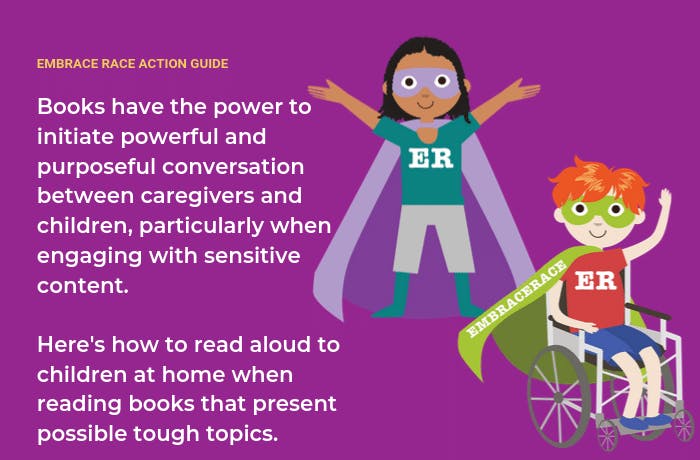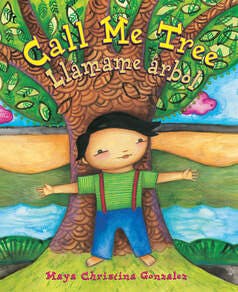Reading aloud with kids to spark conversations about difference
by Katie Potter, Literary Specialist at Lee and Low Books

Lee and Low Books is the largest multicultural children's book publisher in the United States. From our start over 25 years ago, our mission has been to publish contemporary diverse stories that all children can enjoy. (Find our books, resources and more at LeeAndLow.com.)
Read-alouds serve many purposes: to engage with children, have fun, learn about something new, connect with a character, and/or as vehicles for conversations about race and other issues that require careful thought and consideration. I work with a lot of educators and the same skills that teachers use in the classroom can be replicated at home. Books have the power to initiate powerful and purposeful conversation between caregivers and children, particularly when engaging with sensitive content. Listed below are tips for caregivers and parents on how to read aloud to children at home when reading books that present possible tough topics.
1. Read the book beforehand.
Go through each page carefully, paying attention to the text and illustration. What do you notice? What do you think the child will observe or ask as you’re reading?

2. Reflect before and after reading why you are reading the book to the child.
Some books can simply be for fun! Others have a message
that you want to convey. What’s your objective?
3. Go back through the book and think about different places where you want to stop and ask the child a targeted question.
For example, if the book addresses empathy, consider pausing at a pivotal moment and ask the child how the character is feeling in that situation and explain his or her thinking.
4. After you read the book to the child, ask a general question about your objective.
This can encourage discussion about the author’s message, characters’ intentions, or something new that was learned. For example, you can ask, “how did this character show that she cared for others?” to circle back to the theme of empathy.

5. Listed here are some general questions that can help spark the conversation:
- Why do you think the character did [scenario]? What made you think that?
- How did the character change over the course of the book? Why is that important?
- How did the character feel when [character] did [scenario]? Why?
- After reading the book, why do you think the title is [give title name]? What makes you think that?
- Did this book make you think of anything in your life? What about another book that we have read together? Why?
Katie Potter



